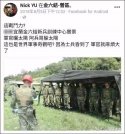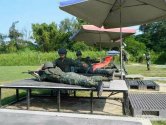Extract:-
Several officers who have participated in the computer-simulated phase of the annual
in recent years also pointed out this obvious flaw. That raises the question of how many of the Taiwanese military’s simulations of its own ability to hold off a Chinese invasion are based on now purely hypothetical soldiers.
These personnel issues would not be so serious if the military had a functional reserve force. On paper, this enormous reserve force is
to be more than 2 million strong.
These personnel issues would not be so serious if the military had a functional reserve force. On paper, this enormous reserve force is
to be more than 2 million strong.
Once activated, these reservists are supposed to fill existing shortages across regular field units, and reinforce casualties, while creating fresh reserve formations from virtually nothing to bolster overall defense, according to the
’s own words.
Just about everything in these talking points is pure fantasy, according to James Huang, a retired army lieutenant colonel who has since become a prolific writer on defense issues and military history, with
on Facebook. Huang said
there was “no way whatsoever” any of Taiwan’s reserves would reinforce existing field units, despite the proven success of the system elsewhere in the world, especially Israel.
That’s the case regardless of whether the reservist is a
conscript with four months’ training or a five-year veteran paratrooper just discharged from the special forces. The established practice of Taiwan’s Reserve Command, according to Huang, is not to send reservists back to their previous units but to lump everyone together into the newly activated reserve infantry brigades that possess no specialty, no vehicles, and no equipment except rifles (often older types) and are led by called-up reservist officers who have little experience commanding such ad hoc units.
In theory, all soldiers and officers (both conscripts and volunteers) are automatically enrolled as reservists on being discharged from active service. They are called up at most once every two years by the Reserve Command to receive refresher training for five to seven days. In practice, such training rarely consists of more than just basic drills and a short practice session at the rifle range. A reservist corporal who was a veteran M60 tank gunner, for example, will be activated only as an infantry rifleman even if one of the army’s active armor brigades has tanks sitting unmanned in the base.
“If we go to war, the soldiers currently on roster are all that we have,” said Lin, the lieutenant colonel, who pointed out that he had never heard of any plan to reinforce units he commanded with reserve soldiers. “At best, they might start combining depleted units. We are supposed to fight until everyone is dead or can’t fight anymore.”


